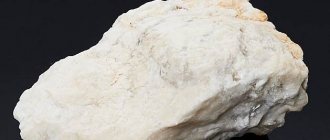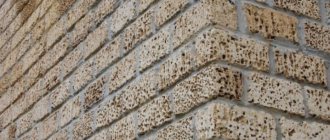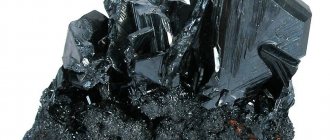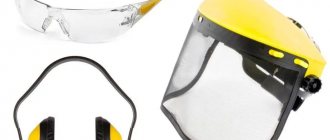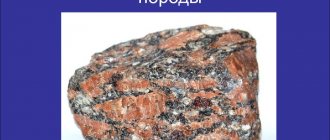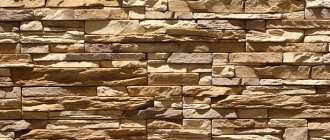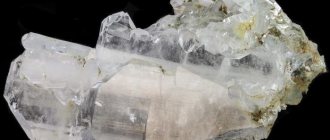Artistic stone carving is one of the most ancient arts. The oldest examples date back to the eighth century BC. Even then, people managed to create magnificent masterpieces with only primitive tools at their disposal.
Today, with the development of technology, glyptics has reached a new level. Modern equipment allows you to create things of indescribable beauty. At large enterprises, the process is automated: jewelry engraving is done by a machine.
Some craftsmen prefer to carve the old fashioned way: with long and painstaking manual work, into which a piece of the soul is invested
What is glyptics
The term "glyptic" comes from the Greek word glyphein. Means "excision", "carving" or "gouging out". Glyptics is the art of artistic stone carving.
Relief images are made on ornamental, jewelry, or precious gems. Finished products are called glypts, glyphs or gems (carved stones).
Types of glypts:
- cameo - gems with a raised image;
- intaglio - precious or ornamental stones with a recessed design.
Brick, concrete and clay surfaces, wax, and bone are also suitable for carving. These are modern varieties of glyptics.
The video shows great examples of work:
The history of the appearance of glyptics
In ancient times, craftsmen carved crafts with indented designs, figures of fauna or flora. During Hellenistic times, monochrome, bicolor or colored cameos appeared. They began to cut out graphic or relief paintings with natural, everyday, mythical, and historical subjects.
Interesting facts about stone carving:
- Temur's grave (Gur-Emir mausoleum, Samarkand) is decorated with a jade carved tombstone made in the 15th century;
- the most ancient archaeological finds belong to the masters of Mesopotamia;
- in ancient times they carved stone seals and magical artifacts;
- in Europe, until the 20th century, glypts were used to decorate royal treasuries and monastery sacristies;
- In Europe, stone-cutting shops began to open in the 20th century;
- in the 15th century they were already making church attributes, decorations, and household items;
- In the 17th–19th centuries, stone cutting was at the peak of its popularity: glypts were used by all classes of the population.
The Russian history of glyptics is also interesting. Catherine II admired the carved stones. She called her hobby a cameo disease. On the advice of General A. Lansky (a like-minded hobbyist), the Empress decided to develop the stone-cutting craft.
The decree was issued in 1781. Suitable gems were searched for in the Urals and sent to court craftsmen in Peterhof. Later, a cutting factory was opened in Yekaterinburg. They began to make stairs, snuff boxes, tabletops, jewelry, inkwells, cutlery, and other stone-cutting products on an industrial scale.
To watch a program about stone carving:
Varieties of artistic carving on gems
There are several types and methods of working with precious minerals. The collective name for the entire industry is glyptics. This term includes all figures and sculptures made of stone and having an image or design carved on the surface. A collection of such art objects is called a glyptothek.
The raw materials for processing are traditionally gems. These are colored stones with a patterned structure
Processed gems are divided into the following categories:
- cameos - stones with a relief image protruding above the surface;
- intaglios are gems with a deepened, “pressed-in” image.
The second type most often represented personal signets. In ancient times, they were widely used as they were the only effective attribute for maintaining privacy. Intaglios were used to seal important letters, documents, caskets, boxes, and even the entrance doors of homes.
Cameos have a more varied purpose. This category is divided into two subtypes of products:
- utilitarian – functional items: smoking pipes, bowls, goblets. Elite paraphernalia was made by order of the nobility from quartz, lapis lazuli, amethyst and other semi-precious raw materials;
- decorative – items for interior decoration and jewelry: sculptures, figurines, figurines, rings, earrings, brooches, pendants.
In rare cases, intaglios also served as objects of decorative art. A portrait of the German writer Johann Goethe is carved on one of them. The author of this work is the artist Hacker.
Seeing the finished intaglio, Goethe was so delighted that he became fascinated by the beautiful gems and began collecting them.
in a separate category . It differs from the usual one in that it is carried out only on the hardest minerals: jade, rock crystal, carnelian, onyx, jasper, agate, etc. The products are durable, but such processing is more complicated and takes more time. Fragile materials such as marble, amber, selenite, gypsum and coral are not suitable for hard carving. Novice amateurs usually work with soft raw materials, since its processing does not require a high degree of professionalism. The next step in mastering carving is carving on medium-hard minerals, for example, carving on opal.
Equipment and technology for working with stones
The glyptics master must work in protective glasses, a respiratory mask, and gloves. To settle the dust, use a spray bottle and water. The workpiece is placed on a fabric bag with sand or other substrate with loose filler.
Tools for carving small stones:
| Manual | Mechanical | For beginners |
| Wide, sharp and dull chisels | Engravers, cutters of various shapes and sizes | Hammer (soft) 700–900 g |
| Straight and curved files | Sander | Flat chisel |
| Engraving scalpel | ||
| Drawing tool | Pneumatic drill, cutters, files, drills | Serrated chisel |
| Carbide tips (knitting needles) for drawing patterns | Drawing templates, stencils | |
| Zakolniki | Pneumatic chisel | Set of files |
| Tongues |
For carving on stone walls or blocks, they use a sledgehammer, grinder, mallet, pick, large chisels, and jackhammer. Cut and grind with discs or attachments coated with diamond or corundum.
Technology of carving on stone surfaces:
- The carved stone blank is taken 1–2 sizes larger than the future product.
- Determine the presence and location of cracks. The damaged mineral is discarded or glued together.
- Start with simpler reliefs.
- A sketch of the image is drawn on a gem or paper or sculpted from plasticine.
- Cut along the texture of the rock (if there are veins or other features).
- The mirror relief is excised. To verify the drawing, the surface is regularly cleaned and control prints are made.
- The stone is knocked down with a chisel from the edges to the center, the tool is held at an acute angle.
Bornuk carving is famous for its animalistic genre and stones for gems. Masters s. Bornukovo makes figurines of animals, birds, people and household items from anhydrite.
Watch the video to see how the material is processed:
Features of stone carving
Carved stones with artistic images are called glypts, or gems. They are made from different types of raw materials - ornamental, jewelry and ornamental, precious stones.
Chalcedony glypta
On a note! Even brick and concrete are suitable for carving. Such crafts can be successfully used for interior decoration.
All glypts can be divided into two groups:
- cameos - products with a raised image;
- intaglios are stones with an in-depth pattern.
The art of stone carving also includes the production of stone sculptures and statues. Only professionals can do this task, but even a beginner can handle simple projects.
Which stone to choose?
If you have no experience in carving, you should try your hand at working with soft stones. Even ordinary sand-lime brick is suitable for this purpose.
Its disadvantage is severe crumbling and cracking, but it is plastic and makes it possible to make beautiful three-dimensional compositions. You can also get soapstone, or wax stone, which is even more pliable and soft and can be cut even with other hard stones or simple tools.
Alabaster would be a good option. It is sold in different color variations, slightly harder than soapstone, but stronger and lighter.
Limestone lends itself well to processing, but it is quite limited in color. You should avoid processing granite and marble at the initial stage: even a professional can work on these materials for days.
Important! The size of the stone must correspond to the dimensions of the future product and depends only on the specific idea.
Tools for work
The starter kit does not include expensive accessories. The master may already have some of them:
- personal protective equipment – respirator, gloves, goggles;
- substrate - a bag of sand;
- spray bottle with water;
- flat chisel (plain or serrated);
- soft hammer weighing 600-900 g;
- a set of files of different sizes;
- drill or engraver;
- sandpaper;
- templates and stencils.
Experienced specialists can also use more complex tools: engraving scalpels, pins, dowels, special knitting needles and chisels, cutters and drills.
DIY glyptics at home
For beginners, it is advisable to carve on soft minerals. Limestone, soapstone, and alabaster (construction gypsum) are used. They are suitable for work at home and can be processed with hand or mechanical compact tools. It is better to apply abstractions, but over time complex plots will be obtained.
They also sell professional-grade portable equipment. Therefore, experienced stone cutters can also set up a workshop at home.
At home, artistic carving is possible:
- by bone;
- agate;
- silicon;
- multilayer jasper.
To work at home, you need coarse, medium, fine and fine-grained abrasives. The first is used to clean the surface during carving. The last three are for detailing the relief and grinding and polishing.
Algorithm of actions:
- Select a workpiece for carving.
- Thinking through the plot.
- Level the surface of the stone.
- They grind the gem on the faceplate.
- Prepare a sketch or cast of the drawing on plasticine or clay. It is allowed to draw an image on a stone.
- Carving begins with hand or mechanical tools, roughing and grinding drills. During the process, the drawing is checked against the image model.
- Polish with fine-grained abrasive.
If there are cracks, the thread is made along the damage. If the stone is cracked, the pieces are glued together with epoxy resin.
View this post on Instagram
Posted by Intaglio and Cameo (@detelinacameo) Apr 22, 2022 at 10:10 am PDT
View this post on Instagram
Posted by Lala Ragimov intaglio gems (@lalaragimov) Oct 1, 2019 at 10:12 am PDT
View this post on Instagram
Publication from ? Tatosha? (@tatosha.art) Oct 27, 2022 at 1:36 PDT
View this post on Instagram
Posted by Intaglio and Cameo (@detelinacameo) Oct 22, 2022 at 8:26 am PDT
Glyptics
For this type of cutting, only precious stones are used. This technique is quite difficult in technique, due to the fact that the craftsmen must choose hard precious rocks, and the images cut out on them are quite tiny. Since the style was mainly used to create seals. It was also necessary to be able to make an exact mirror copy of the image.
But difficulties in execution did not prevent glyptics from playing a big role in the development of art.
Preparation for carving
At the first stage, they think over and draw a sketch of the future picture. Usually it is made on paper, then a life-size product is sculpted from clay or plasticine and an image is pressed onto it.
Advice! It is worth working with small elements only if you have experience. At first you need to practice only light abstract drawings.
Next, the stone is prepared for carving - it is given the desired shape. Use a hammer or other tools; chips and irregularities are ground off with files. Work carefully to avoid cracks.
Pre-treatment of stone
Final grinding and polishing is done using sandpaper with varying degrees of grit. Regularly spray the stone with water throughout the processing process.
Cameo: what is it?
Having mastered the art of intaglio, the ancient masters began to experiment with stone and created images that were distinguished by a convex relief. Cameos quickly became popular, striking with their beauty and ideal shapes. The cameos, which were made from minerals distinguished by the presence of multi-colored layers (agate, sardonyx), looked incredible. The smooth transition of shades allowed us to show the play of light.
And if intaglios were miniature in size, cameos could be carved on larger stones. They were used not only for jewelry, they began to decorate cups, vases, musical instruments and much more. Entire workshops were created that created only cameos, carving various scenes and portraits on stone.
The difficulty in processing natural minerals and the unpredictability of the varied color palette of the various layers made the work of the craftsmen truly difficult. New abrasive materials and more advanced tools had to be developed. The cameo became a real painting on stone. These elegant products, framed with metal, still delight connoisseurs of beauty.
Gemma: beauty made of stone
In ancient times, craftsmen created very precise drawings on stones with many small details. Scenes from myths and legends were often depicted on rounded gems. And over time, this technology became the basis for the production of seals, which were supposed to leave a unique impression on wax or sealing wax.
For their works, jewelers used not only “soft” minerals, but also rocks that were highly hard. Cutting out the required images took a lot of skill and effort. The surface was polished, an abrasive and special cutters were used to apply contours.
Combining materials of different hardness and grain size, the craftsmen achieved incredible realism in the design, conveying various effects and textures. Over time, special machines appeared, thanks to which it became easier to process even very hard minerals.
Famous historical figures were very fond of such stone carvings. The Roman Emperor Caesar owned a ring with the image of the goddess Venus. Catherine II was also a fan of gems, whose jewelry is now in the Hermitage.
The rulers of the East also decorated their symbols of power and status with sophisticated images made on gems. In the first half of the last century, such products were popular among artists. And now interest in such jewelry is returning again. Beautiful patterned stones are used not only in jewelry, but also for decorating wardrobe items and accessories.
Brick carving
A cheap raw material for practicing carving is brick. To work with it, you can take a diamond-coated file of any shape and size.
The course of action will be as follows:
- Heat. The brick is heated to +1000 degrees by firing so that its top layer melts a little.
- Scratching. A design is applied to the surface, carefully scratching it. You can also polish the brick well first, and then make a picture in the center.
- Etching. The drawing can be done using acid, which is applied directly to a hot stone surface.
Artistic brick carving
Stone carving is very fascinating and unusual. It makes it possible to create both simple crafts and real works of art that will decorate the interior or become a unique gift for a loved one.
Intaglia: what is it?
Having begun to apply drawings on the surface of stones, the craftsmen began to strive to make these images more voluminous, as if immersing them inside the gem. This is how the technique of creating intaglios, or immersed relief designs, was invented. Jewelers of antiquity spent many months in the painstaking process of creating miniature masterpieces.
The nobility quickly appreciated the beauty of such products. Rulers, rich people and other representatives of aristocratic circles sought to acquire luxurious rings. Requests grew rapidly, and craftsmen had to create entire paintings on the surface of the stone that would immortalize various significant events in the life of the customer. Men used intaglio rings as seals, while women preferred beautiful medallions or brooches.
And if at first precious and semi-precious stones were used for such products, then over time glass and even shells began to serve as materials for intaglio. The improvement of tools also influenced the widespread use of intaglios, which gained particular popularity in the nineteenth century. Reverse images were also invented, which had to be viewed from the opposite side. To make the carved design sparkle with new colors, they began to use various colored substrates.
